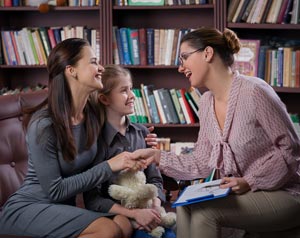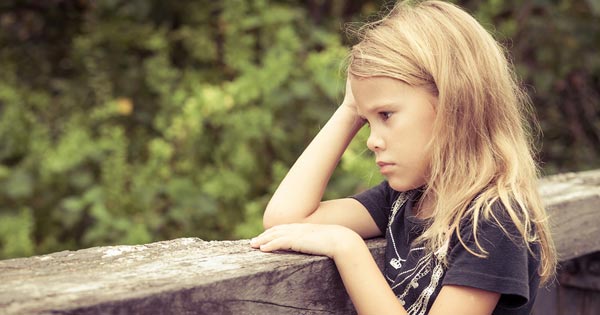Overcoming Generalized Anxiety Disorder in Kids and Teenagers
by Erika Slater
It seems like now more than ever before, more kids are being diagnosed or labeled with having mental health disorders such as depression and anxiety.
It also appears that generalized anxiety disorder is truly becoming more prevalent in younger kids and teenagers.
What’s up with all this?
Are more kids being born with brain and neurological deficiencies or abnormalities which is leading them to becoming ‘anxious’, or is it more of a sociological phenomenon which is leading to psychological problems?
Or is it as some would suggest a change in our diets to include more processed foods? The argument being previous generations didn’t see this volume of issues in their kids and what has changed is our tendency in jam-packed lives to have more meals with more processed foods.
This is a topic personal to me, and I know it can have a long-term impact on not just the child but the parents and siblings as well if early intervention isn’t made.
WHAT IS GENERALIZED ANXIETY DISORDER (G.A.D.)?

These experiences are also akin to adults who possess this same anxiety disorder.
The most common symptoms with G.A.D. are excessive worry that’s persistent on a daily basis.
This “being anxious” is unwarranted whereby kids worry about the most mundane things in their everyday encounters.
Over a period of time it can become strong enough to debilitate them, and prevent them from wanting to leave the house, or attend school, or even play with their friends.
The Anxiety and Depression Association of America says “GAD affects 6.8 million adults, or 3.1% of the U.S. population, in any given year. Women are twice as likely to be affected.” It also points out that “The disorder comes on gradually and can begin across the life cycle, though the risk is highest between childhood and middle age.”
So what really causes it? Well, currently we don’t really know. There are some theories based on observations but it’s an area of debate.
Here’s what we know at the moment…
DEBATE OVER CAUSES OF G.A.D.:
Often times, the concern these kids’ experience usually has no clear cut cause-effect relationship with their anxiety. Since they arise often times ‘just out of the blue’, later in the child’s life, it’s difficult to pinpoint the cause on being biological in nature (a brain abnormality).

When it comes to school, it’s most likely the child is the victim of bullying; feeling rejected, or has witnessed some kind of traumatic event they weren’t able to process.
In their home lives, children being raised in abusive or dysfunctional environments are also more likely to become ‘anxious’. Furthermore, where there’s a sudden illness, or death in the family, a major move or life change, or a major catastrophe (even witnessed on TV/media which isn’t properly discussed with the child) it’s possible any of these could be the underlying issues leading to the anxiety disorder.
My experience doesn’t entirely support the opinion kids form G.A.D. entirely because of environment at school or home.
The fact is many kids are subjected to school bullying and operating in a dysfunctional environment without displaying symptoms of prevalent anxiety. You could even say it’s part of growing-up and coping. You can look at a family and see two thriving siblings and another who is anxious and needing special attention. The same school and environment produced different results.
Let me be clear here though, there are obviously environments, events and home situations that can have a severe negative impact on a kid and cause ongoing behavior changes. But kids that are different from the start are usually easy pray for bullying and it feeds on itself and also impacts family life.
The fact is if you’re a parent dealing with a kid diagnosed with Generalized Anxiety Disorder or displaying the symptoms then at some point your focus is less about what caused it but rather how can I get the help and support they need so they can lead a thriving life.
You do have options…
TREATMENT FOR G.A.D.:

Sure they can and do work, but they only treat the symptoms and not the causes which are always ready to bubble to the surface.
If drugs are used to treat anxiety, it’s most likely the child can develop a dependence on them and be using them indefinitely.
Additionally, many of these drugs have side-effects and are known to disturb kids sleeping and eating habits, and can cause problems in other areas. Always understand the risks of prescribed drugs and make sure you control their use.
Instead of drugs, individual counseling and/or family counseling is an alternative option, although the combination of both seems the preferred option by most professionals these days. If you go this route, you’ll most likely be working with two different professionals – one to prescribe drugs and the other for therapy.
As regards counseling Cognitive behavioral therapy (CBT) has shown to produce exceptional results in kids with anxiety disorders.

In doing so, faulty, irrational thoughts are replaced with positive ones. When seeking out a therapist skilled in CBT ensure they have a focus on working with kids and teenagers.
Hypnosis is also a great compliment to CBT.
Hypnosis isn’t for all kids as it requires a good attention span and creative mind. Generally speaking, it’s proven more successful in teens.
A trained hypnotherapist can help kids relax and use stories that reach and tap into the unconscious mind of the individual to enable them to see happier, productive outcomes.
Hypnosis can also provide triggers for kids to recognize when excessive worrying is happening and teach coping skills to level out the impact on their lives. If you want to consider working directly with me with your child on their anxiety, through my online or in-office sessions, then check out my Hypnosis Services or if you’ve a specific need around this topic then contact me here.
Alternatively, if you looking for a self-hypnosis product for your teenager suffering from this disorder, then check out this resource to see if it can help >>>
ADDITIONAL RESOURCES RELATED TO ANXIETY DISORDER IN KIDS:
Generalized Anxiety Disorder in Kids – Boston Children’s Hospital
Anxiety and Depression Association of America
Cognitive Behavioral Therapy 101
Library of Self-Hypnosis Downloads Products >>>
Erika Slater CH
Director
Free At Last Hypnosis
CATEGORIES
FEATURED POSTS
Interested in making a significant change in your life and interested in learning more about what I do and how I do it? Discover my hypnotherapy services here or contact me here.

DISCOVER HOW TO START CHANGING HABITS TODAY.
In this free audio hypnosis session, you’ll experience the power of your subconscious mind to begin to change your habits. If you've never experienced hypnosis before then this is a great introduction...


